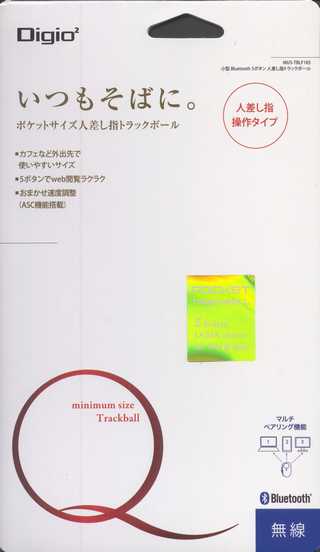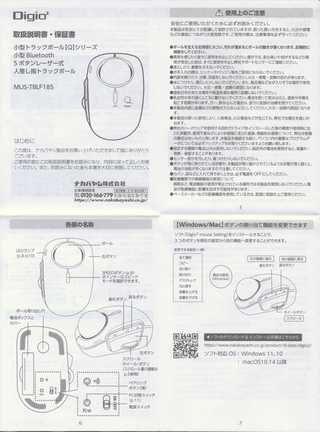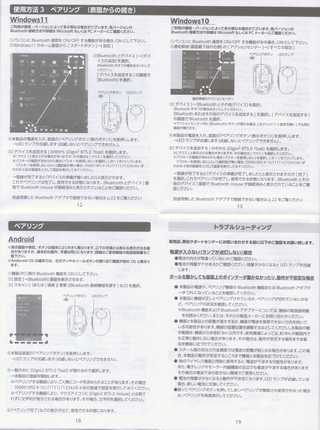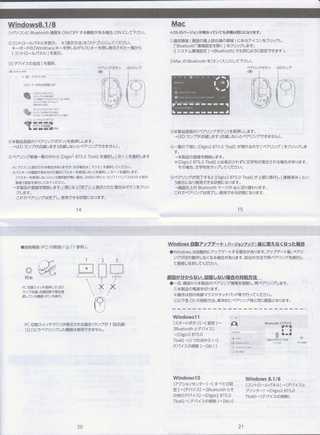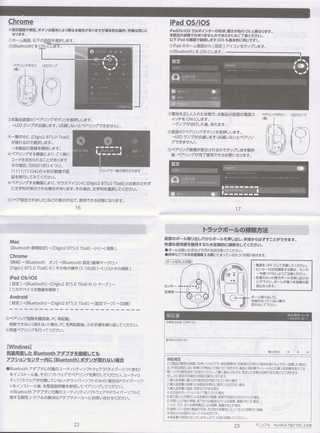Ball size: 13/4" (33.98mm)
Interface: Bluetooth
HID ID: VID&020c45_PID&7e1a
Bluetooth name: Digio2 BT5.0 Tball
Year: 2022
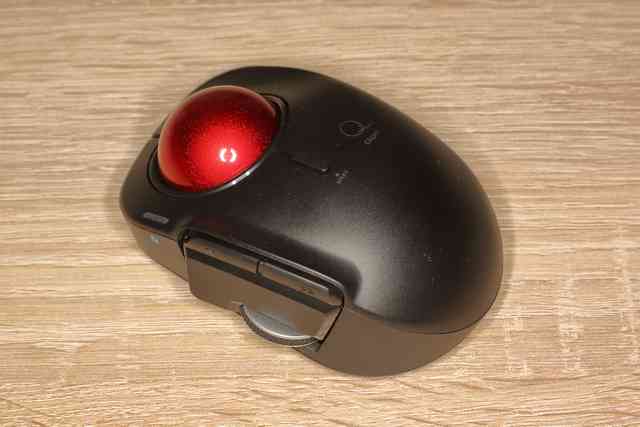
The first finger-operated trackball from this company. Looks like direct competitor to the Elecom Bitra: the same form-factor of ultra-compact device with 34mm ball. Funny enough, the maker prefers to compare it to much bigger Deft Pro instead: probably, to emphasize advertised compactness:
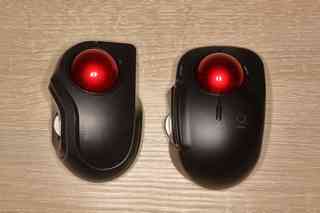
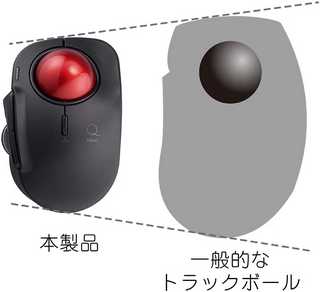
Translation from company press-release:
https://www.nakabayashi.co.jp/news/2022/release/972
"Digio²" is Nakabayashi's personal computer/smartphone-related product brand that includes smartphone LCD films, PC mice, cables, and keyboards.
This product is the index finger type of the compact trackball “Q” series.
The thumb type on the market has been well received for its revolutionary small size and portability as a trackball.
Sensor is 3200 cpi PixArt PMW3610, controller is a PixArt PAR2801 (unable to find a datasheet, but obviously similar to the PAJ2801 from the same maker). Switches under thumb cluster are T-MEC (the Omron D2L-D clone), right-click and DPI switches are square 6x6mm ones, and pairing and connection select ones are simple membranes integrated in PCB. Ball is supported by white ceramic beads of approximately ~2.5mm diameter: they're permanently inserted into ball cup, so the replacement will require drilling from outer side, as e.g. in the Microsoft Trackball Explorer case. Scrollwheel encoder is mechanical. Polling rate reported by different tools as 105 to 115 Hz.
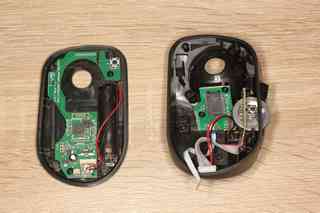
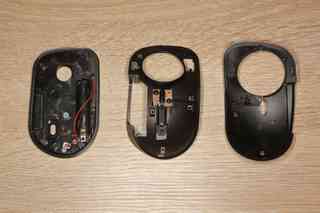

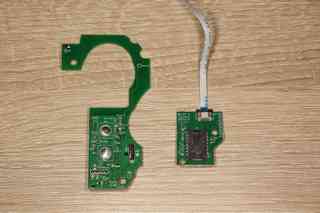

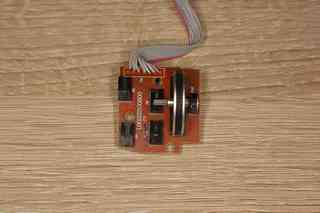
Red LED on the top is used to indicate both DPI setting and the BT connection selected by number of rapid or slow pulses (1 to 3), and also glows during the pairing procedure. Available speed steps are fixed 600 dpi, dynamic 450 - 1200 dpi and 600 - 1600 dpi, where two latter feel essentially the same.
The trackball is capable of pairing to 3 devices. I've checked it with Windows desktop, MacOS notebook and Android smartphone: everywhere it works fine. Being standard 5-button type, it does not require proprietary driver to operate, but Nakabayashi offers nice Digio² Mouse Setting configuration software for Win and Mac as well. Aside for button customization, it supports convenient precision/sniper mode (called "Slowdown Enable" there) by assigning keyboard hotkey, similar to Kensington software. Funny thing is, it stores its configuration data not in \AppData\ folder or registry, but in \Documents\Digio2 Mouse Setting\ folder.
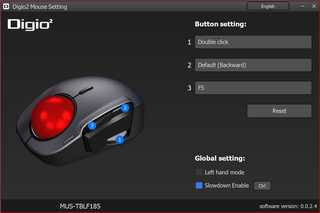
Device is surprisingly convenient in use: all the buttons are at the right places, travel and the actuation force are fine. Ball movement is perfectly smooth. Wheel is located below the left button: quite rare position in such devices, but it turned out it's very handy to use and doesn't interfere with buttons there. Different type of switch under the right button leads to slightly unusual feel: clicking sound and tactile perception doesn't match, but it does not make any real inconvenience. One insignificant thing is a Left button scratchy feel, like if there's some plastic-by-plastic rubbing. The Digio is definitely too small to be used as an everyday driver, but for out-of-office events and on the road, it's fine. Nakabayashi's definition of "pocket minimum-size trackball" seems to be absolutely correct. It is also available in MUS-TRLF184 wireless USB dongle variant; both of them offered in black & white color.
Unfortunately, as it often happens, very minor design shortcoming leads to the serious problem. After about two weeks of intense use as a main pointing device, the Forward button started to stuck, slightly rotating on its vertical axis. Disassembling revealed the reason: Back and Forward buttons are fixed to the frame using standard technique of melting plastic pins. The problem is, in this particular case these pins are quite thin and located near the bending zone. Melting was clearly insufficient, as expanded part of pins have some gap to the button surface, and moreover - they're too small to withstand clicking force. Melted part of one pin broke, resulting in the shifting of the button inwards from its position - so it's able to skew, keeping the switch in depressed state. Using the screws instead (as it's done for the Left button) would eliminate the issue completely - but current design of thumb cluster doesn't allow that, as mounting base for 4th. and 5th. buttons is just an edge of thin plastic wall less than 1mm wide.
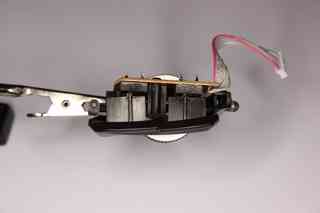
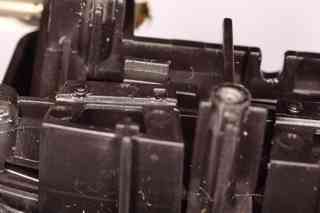
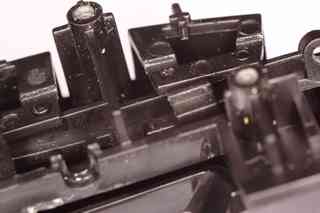
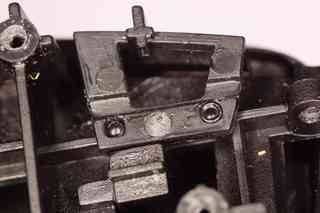
I've temporarily fixed that by applying micro drops of superglue to the pins: let's see how long it will hold the parts. While here, I've also fixed LMB rubbing/scratching issue: it was caused by actuator pin's contact with Forward button mounting lip. Trimming about ~0.5mm of plastic from the latter is all that's needed to maintain free movement.
Factory blister package insert:
Included paper manual:
Manufacturer logos:


Traditionally, this trackball was used to prepare this article.
